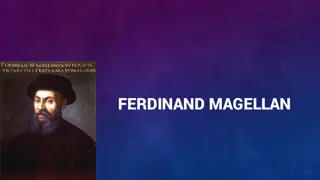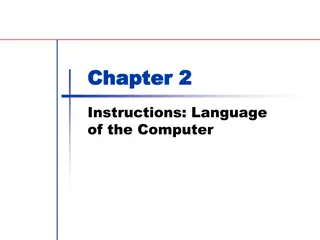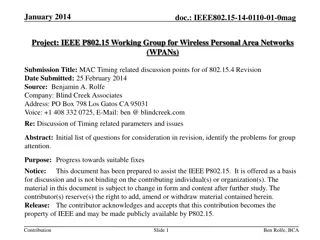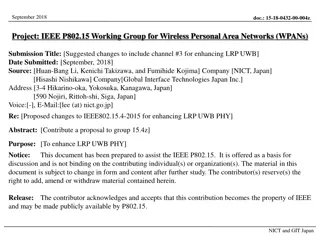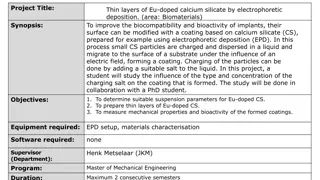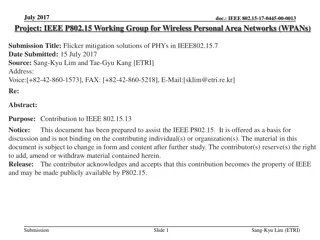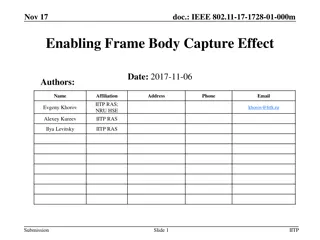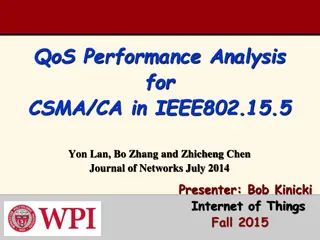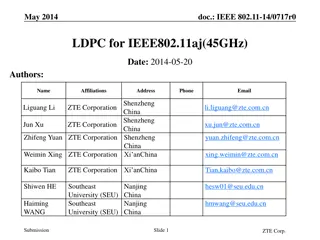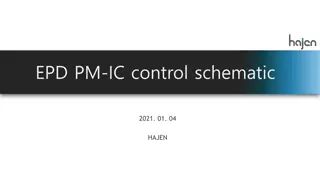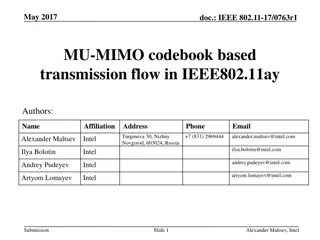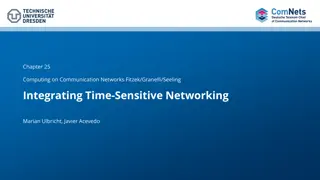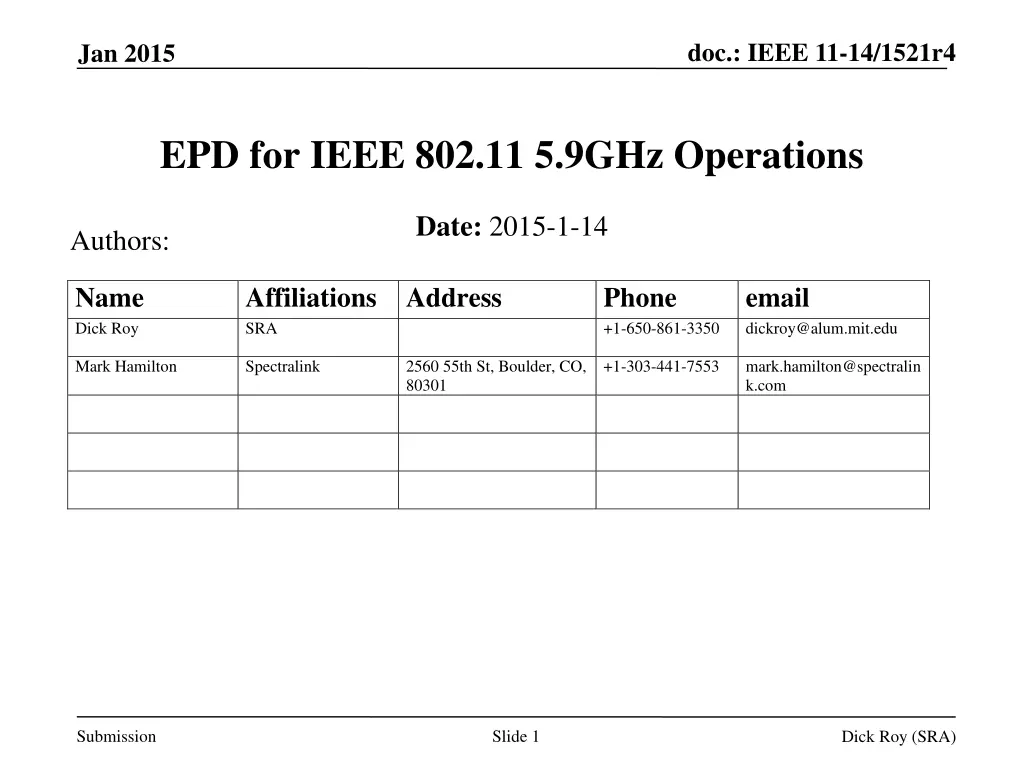
Switching to EtherType Protocol Discrimination in IEEE 802.11
Explore the rationale behind transitioning from LLC Protocol Discrimination to EtherType Protocol Discrimination in IEEE 802.11 5.9 GHz operations. Learn about the background, current status, and support for this significant shift in layer-2 protocols.
Download Presentation

Please find below an Image/Link to download the presentation.
The content on the website is provided AS IS for your information and personal use only. It may not be sold, licensed, or shared on other websites without obtaining consent from the author. If you encounter any issues during the download, it is possible that the publisher has removed the file from their server.
You are allowed to download the files provided on this website for personal or commercial use, subject to the condition that they are used lawfully. All files are the property of their respective owners.
The content on the website is provided AS IS for your information and personal use only. It may not be sold, licensed, or shared on other websites without obtaining consent from the author.
E N D
Presentation Transcript
doc.: IEEE 11-14/1521r4 Jan 2015 EPD for IEEE 802.11 5.9GHz Operations Date: 2015-1-14 Authors: Name Dick Roy Affiliations Address SRA Phone +1-650-861-3350 email dickroy@alum.mit.edu Mark Hamilton Spectralink 2560 55th St, Boulder, CO, 80301 +1-303-441-7553 mark.hamilton@spectralin k.com Submission Slide 1 Dick Roy (SRA)
doc.: IEEE 11-14/1521r4 Jan 2015 Abstract Background Rationale for switching from LLC Protocol Discrimination (LPD) to EtherType Protocol Discrimination (EPD) in the IEEE 802.11 5.9 GHz bands Current status of implementations and support Submission Slide 2 Dick Roy (SRA)
doc.: IEEE 11-14/1521r4 Jan 2015 Background From their inception, 802.2 (LLC) and 802.3 (L/T aka Ethernet) have been and continue to be incompatible layer-2 (LLC-sublayer) protocols. Somewhere between 1999 and 2007, IEEE 802.11 specifically designated LLC (as defined in 802.2) as the Logical Link Control sublayer protocol to be used in all 802.11 STAs. Ethernet now dominates the LAN market (FDDI and Token Ring are disappearing) Submission Slide 3 Dick Roy (SRA)
doc.: IEEE 11-14/1521r4 Jan 2015 Background (continued) IEEE 802.2 was withdrawn in 2011 and is no longer supported by IEEE (ISO maintains a stabilized version in ISO/IEC 8802-2:1998) IEEE 802-2014 Overview and Architecture explicitly discourages the use of 802.2 LLC in the future. New IEEE 802 standards shall support protocol discrimination in the LLC sublayer using EPD. Submission Slide 4 Dick Roy (SRA)
doc.: IEEE 11-14/1521r4 Jan 2015 Background (continued) The use of EtherTypes instead of DSAP/SSAP addresses as network layer protocol identifiers means LLC SNAP/RFC1042 has to be used (cf. IEEE 802.11) As a consequence, six (6) octets of fixed content (and therefore useless) are transmitted in every over-the-air stream. Submission Slide 5 Dick Roy (SRA)
doc.: IEEE 11-14/1521r4 Jan 2015 Background (continued) LLC-sublayer 802.2 (LPD) header format (LLC SNAP RFC1042) 1 1 1 3 2 DSAP= 0xAA SSAP= 0xAA Control = 0x03 Protocol ID= 0x000000 Ethertype SNAP header LLC header Length/Type encoding (EPD) header format 2 Length < 1503 (0x05DF) Ethertype > 1535 (0x05FF) Length / Ethertype LT header Submission Slide 6 Dick Roy (SRA)
doc.: IEEE 11-14/1521r4 Jan 2015 Background (continued) IEEE 802.11 TGp created the amendment to IEEE 802.11 for operations in the 5.850-5.925 GHz frequency bands currently allocated by the FCC to Intelligent Transport Systems (ITS) operations Operations in these bands are outside the context of a BSS (dot11OCBActivated is true in 5.9 GHz bands in the US and Europe (see IEEE Std 802.11 Annex E)) Submission Slide 7 Dick Roy (SRA)
doc.: IEEE 11-14/1521r4 Jan 2015 Rationale There are currently no commercial deployments of IEEE 802.11 5.9 GHz units/systems (only prototype units in trials); hence the 5.9 GHz MAC/PHY can be considered to be new . Therefore, EPD should be used because it is: more efficient (6 bytes saved in every data frame) compatible with 802.3 ethernet LANs and 802.1Q bridges compatible with GLK (EPD) operation (when standardization is complete) IEEE 802-2014 mandates it! Submission Slide 8 Dick Roy (SRA)
doc.: IEEE 11-14/1521r4 Jan 2015 Rationale (continued) There are ongoing discussions on and investigations into possible sharing of some part of the ITS 5.9 GHz frequency bands (cf. UNII-4 in FCC NPRM 13-22) Changing from LPD to EPD for ITS communications in the ITS bands would neither impact nor be impacted by possible sharing with other IEEE 802.11 devices should such sharing eventually be allowed The ONLY change is to the contents of the LLC sublayer Protocol Data Unit (LPDU aka MSDU) Submission Slide 9 Dick Roy (SRA)
doc.: IEEE 11-14/1521r4 Jan 2015 Current Implementations Vendors of 5.9 GHz (11p) radio units have made and successfully tested the change including: Q-Free Commsignia Savari Networks Arada Systems Denso ITRI Submission Slide 10 Dick Roy (SRA)
doc.: IEEE 11-14/1521r4 Jan 2015 Current Implementations - LPD (before) Submission Slide 11 Dick Roy (SRA)
doc.: IEEE 11-14/1521r4 Jan 2015 Current Implementations - EPD (after) Submission Slide 12 Dick Roy (SRA)
doc.: IEEE 11-14/1521r4 Jan 2015 Current Support A large number of vendors have indicated support for the change In October 2014, TC 204 passed the following resolution: Resolution 1072: ISO/TC 204 resolves to support a change from LPD to EPD in the 802.11 specifications for 5.9 GHz frequency bands. APPROVED Submission Slide 13 Dick Roy (SRA)
doc.: IEEE 11-14/1521r4 Jan 2015 802.11 WG Straw Poll Results November 2014 (San Antonio) Do you support a change from LPD to EPD for ITS communications in the IEEE 802.11 5.9GHz ( 11p ) frequency bands? YES: 20 NO: 0 NEED MORE INFORMATION/TIME: 37 ABSTAIN: 1 Submission Slide 14 Dick Roy (SRA)
doc.: IEEE 11-14/1521r4 Jan 2015 802.11 WG STRAW POLL (for mid-week plenary, Atlanta meeting) If TGmc made text changes in the REVmc draft to require EPD format for MSDUs in OCB (ITS) communications in the 5.9GHz band, would that prompt you to vote No on the next Letter Ballot? YES: NO: ABSTAIN: Submission Slide 15 Dick Roy (SRA)
doc.: IEEE 11-14/1521r4 Jan 2015 802.11 WG MOTION (for mid-week plenary, Atlanta meeting) Move that 802.11 WG supports the use of EPD MSDU format for OCB (ITS) in the 5.9 GHz frequency band, and requests that TGmc consider text changes to facilitate this format, similar to 11-14/1522r2. NOTE: This is NOT a vote on the text changes in 11- 14/1522r2. The text change details would be handled within TGmc. YES: NO: ABSTAIN: Submission Slide 16 Dick Roy (SRA)
doc.: IEEE 11-14/1521r4 Jan 2015 MOTION (for TGmc) Move to instruct the TGm editor to make the changes specified in 11-14-1522-02-000m-lpd-to-epd-in-5- 9ghz.docx to the latest version of the 802.11 draft. YES: NO: ABSTAIN: Submission Slide 17 Dick Roy (SRA)






